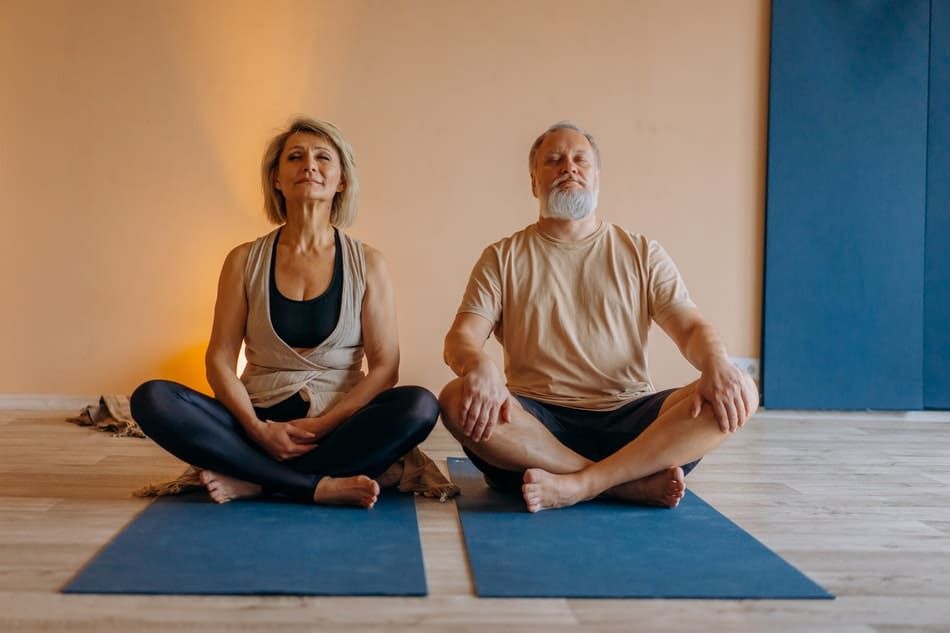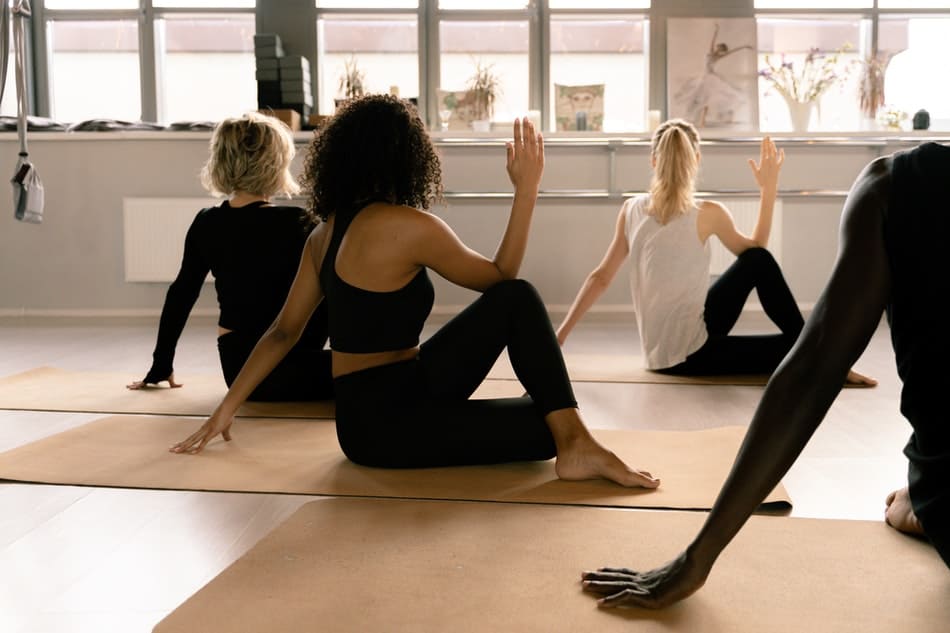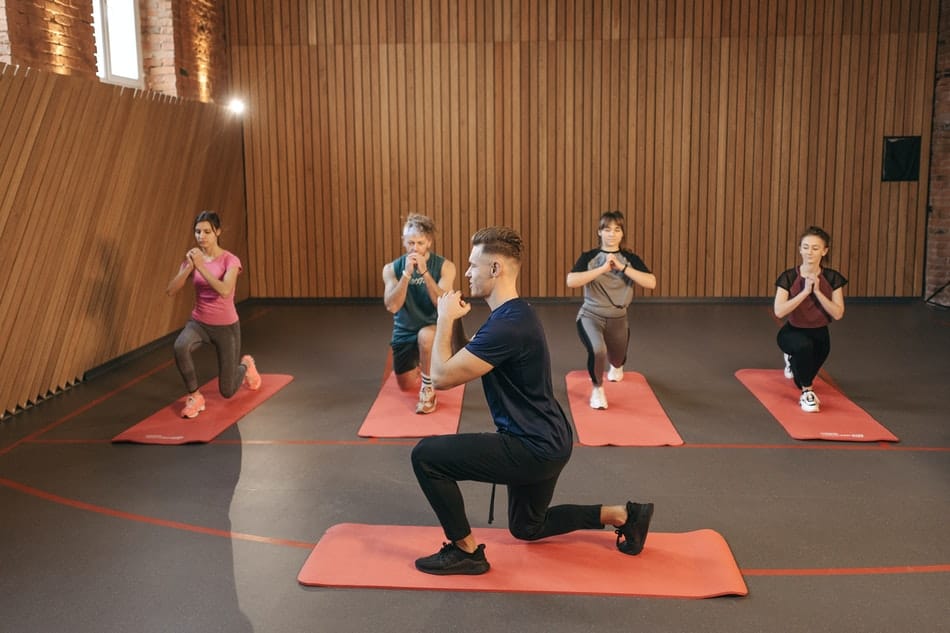What is the difference between vinyasa and ashtanga yoga? There are many different types of yoga, and it can be difficult to decide which one is right for you. I will compare these two popular styles of yoga. I will also discuss the history, philosophy, and benefits of each style to help you decide which one is right for you!
Vinyasa yoga is a flowing style of yoga that links breath with movement. The pace of a vinyasa class is usually faster than other types of yoga, such as Hatha or Iyengar. Ashtanga yoga is also a flowing style of yoga, but it’s more physically demanding than vinyasa.

Vinyasa Yoga
Vinyasa yoga is a type of yoga that emphasizes movement and breath. In vinyasa yoga, each movement is synchronized with an inhalation or an exhalation of the breath. Vinyasa means “linking” in Sanskrit, and vinyasa yoga is often also called “flow” yoga because of the continuous flow of movements.
Vinyasa yoga is a great workout for your whole body. It builds heat, flexibility, and strength. And because you move continuously throughout the class, it’s also a great cardiovascular workout. If you’re looking for a challenging, yet relaxing, way to exercise, vinyasa yoga may be perfect for you!
Astanga Yoga
Astanga yoga is a system of yoga that was brought to the West by Sri K. Pattabhi Jois. Astanga yoga is also sometimes called power yoga, and it is a more physically demanding form of yoga than other types. In Astanga Yoga, each posture is linked with breathwork, and the goal is to move through the postures fluidly. There are six different series of Astanga yoga, and each one gets progressively more difficult.
Most people who practice Astanga yoga start with the first series, which includes sun salutations and standing postures. Once you have mastered the first series, you can move on to the second series, which adds in some arm balances and inversions. The third series is the most difficult, and it includes postures that are very challenging to hold for a long period.
What Is The Difference Between Vinyasa And Ashtanga Yoga
When it comes to yoga, there are many different styles and types that you can choose from. However, two of the most popular types are vinyasa and ashtanga yoga. So, what is the difference between these two styles? Here are four key differences:
- One of the biggest differences between vinyasa and ashtanga yoga is the flow of movements. In vinyasa yoga, the focus is on linking your breath with your movement. This means that each pose flows into the next, creating a continuous flow. On the other hand, in ashtanga yoga, each pose is static and there is no flowing movement between poses.
- Another difference is in the level of difficulty. Vinyasa yoga tends to be less challenging and is a good option for beginners. Ashtanga yoga, on the other hand, is a more advanced practice that includes inversions and arm balances.
- Another difference between these two types of yoga is the pace. Vinyasa yoga classes tend to be faster-paced, while ashtanga yoga classes are slower-paced.
- Finally, vinyasa and ashtanga yoga differ in terms of focus. In vinyasa yoga, the focus is on physical practice and getting a good workout. In ashtanga yoga, the focus is on the breath and linking each movement with an inhale or exhale.

Vinyasa vs Ashtanga Yoga: Which Is More Popular?
Vinyasa yoga has been on the rise in popularity in recent years. Ashtanga yoga, on the other hand, has remained relatively steady in terms of its popularity. There are a few reasons for this difference in popularity.
One reason vinyasa yoga is more popular than ashtanga yoga is that it is less intense. Vinyasa classes tend to be shorter and have a slower pace than ashtanga classes. This makes them more accessible to people who are new to yoga or who don’t have a lot of time for exercise.
Another reason vinyasa yoga is more popular is that it is more flexible. Vinyasa teachers often allow students to modify poses to make them easier or harder, depending on their level of experience. This makes vinyasa classes suitable for people of all levels of fitness.
Finally, vinyasa yoga is more popular because it is more widely available. There are many more vinyasa studios and teachers than there are ashtanga studios and teachers. This means that people who want to try Vinyasa yoga can usually find a class close to them.
Vinyasa vs Ashtanga Yoga: Weight Loss
Vinyasa is a faster-paced form of yoga, while Ashtanga is more focused on perfecting each pose. So, if your main goal is to lose weight, Vinyasa might be the better option for you. But keep in mind that both forms of yoga can help you slim down in different ways. For example, Ashtanga Might build more muscle, which could help you burn more calories even when you’re at rest.
Both forms of yoga can be great for losing weight, but it depends on your goals and what kind of results you’re looking for. If you want to shed pounds quickly, then Vinyasa might be the way to go. But if you’re looking to build more muscle and tone your body, then Ashtanga could be a better option. Ultimately, the best way to lose weight is to find the form of yoga that you enjoy the most and stick with it!
Final Words
Vinyasa yoga is a more dynamic form of yoga that focuses on flowing movements. Ashtanga yoga is a more traditional form of yoga that emphasizes holding poses for an extended period. Both forms of yoga can be beneficial, but it’s important to choose the right type of yoga for your individual needs.
Do you have any experience with either Vinyasa or Ashtanga yoga? Which one did you prefer? Let me know in the comments below!
If you enjoyed this article, then I have plenty more where that came from! Check out my articles for more yoga tips and advice.
Related Articles

